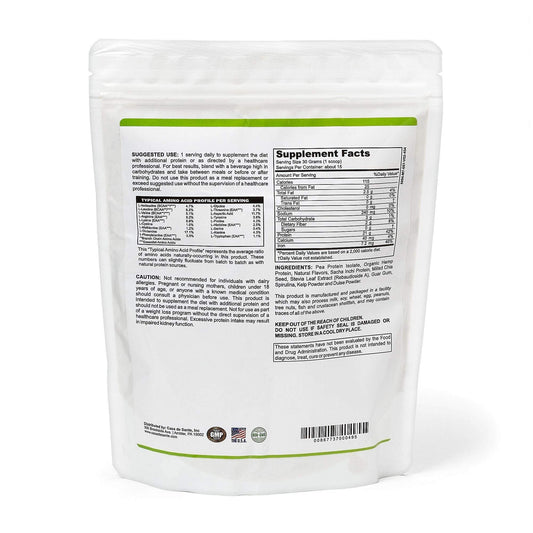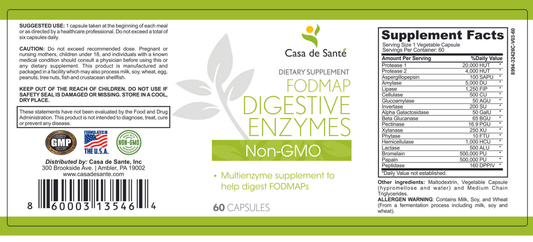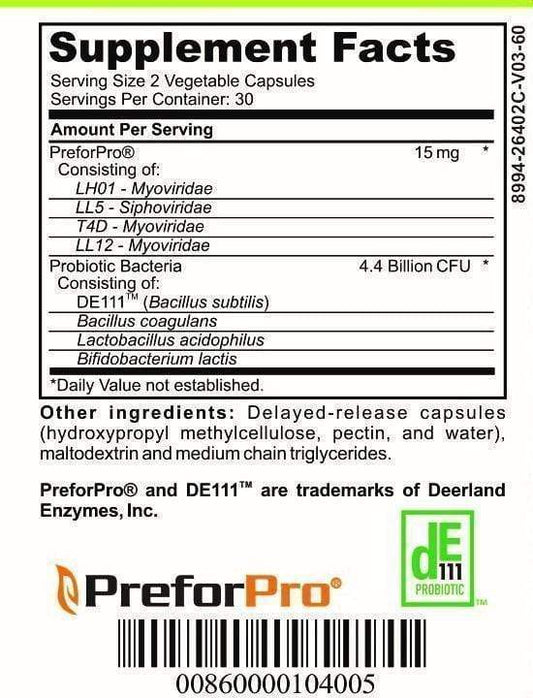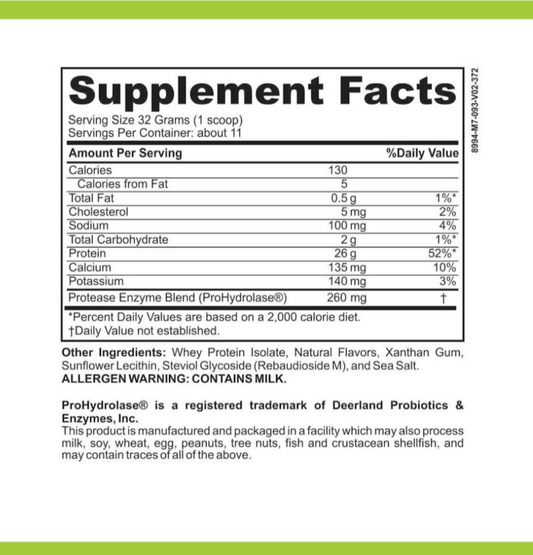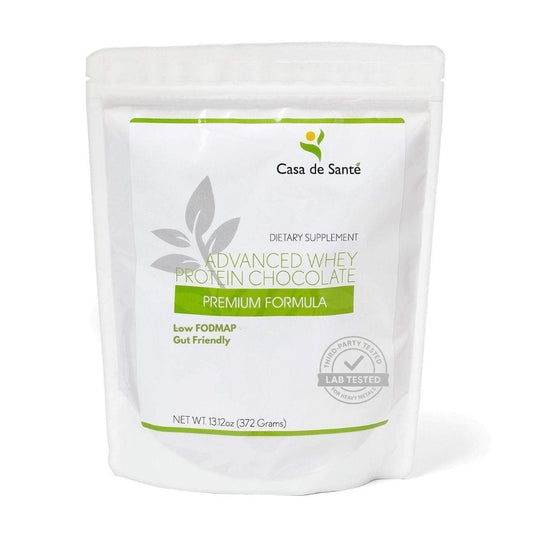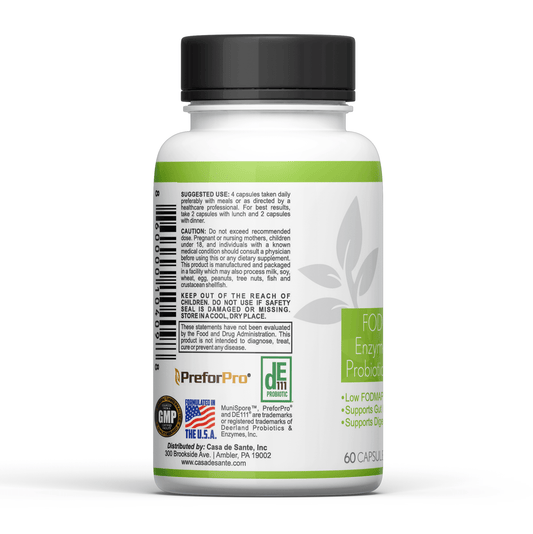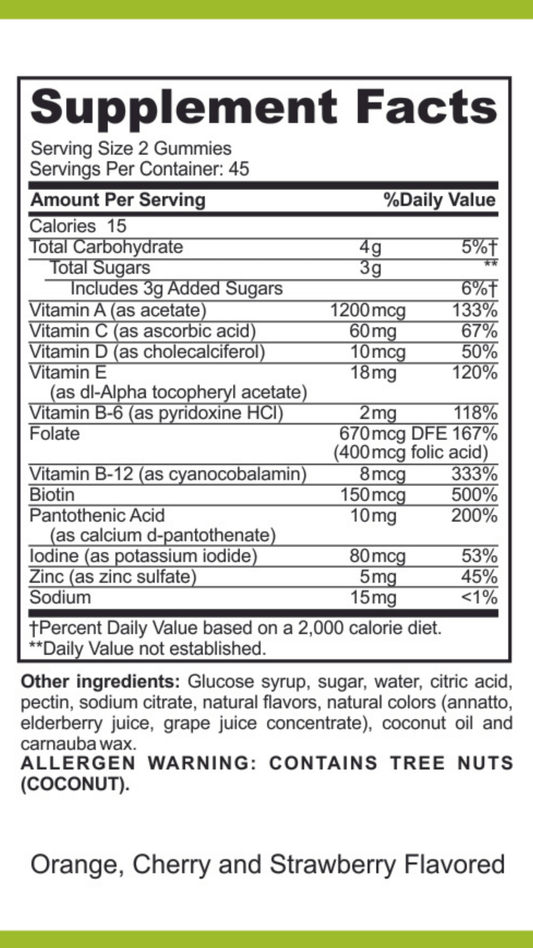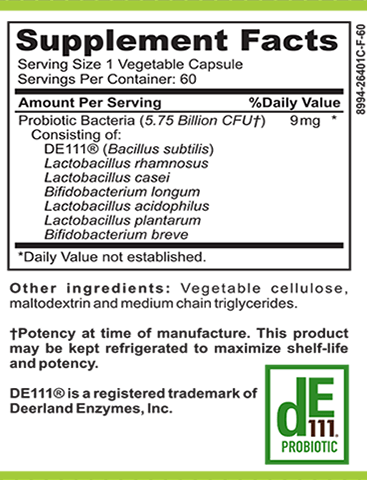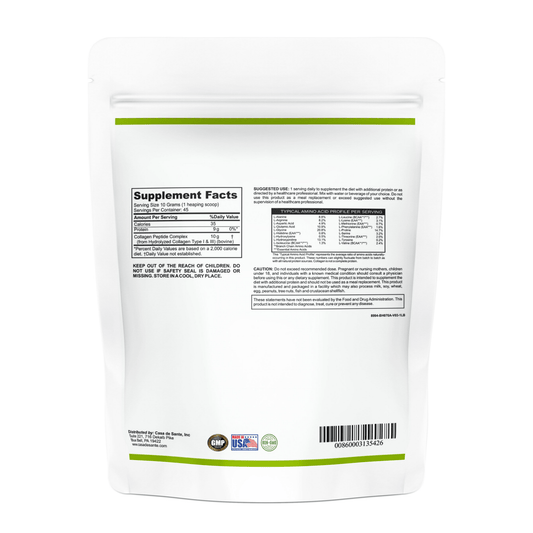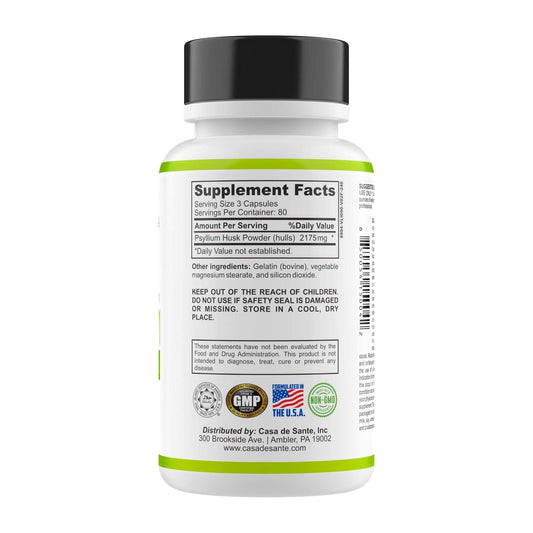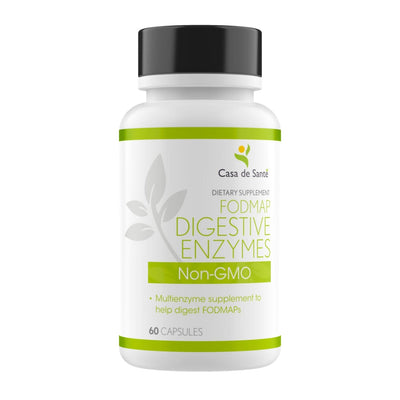Microbial Organic Acids (MOAT) By Mosaic Diagnostics vs Sucrose Malabsorption Breath Test
Microbial Organic Acids (MOAT) By Mosaic Diagnostics vs Sucrose Malabsorption Breath Test
In the world of diagnostics, there are various tests and techniques available to healthcare professionals to aid in the identification and treatment of different conditions. Two such tests, Microbial Organic Acids (MOAT) by Mosaic Diagnostics and the Sucrose Malabsorption Breath Test, have gained significant attention due to their efficacy and reliability. In this article, we will delve into the fundamentals of MOAT and the Sucrose Malabsorption Breath Test, compare their methodologies, accuracy, and patient comfort, and explore real-world applications through case studies and clinical trials.
Understanding the Basics of Microbial Organic Acids (MOAT)
Microbial Organic Acids (MOAT) is a cutting-edge diagnostic tool that focuses on the study and analysis of organic acids produced by microorganisms in the human body. By identifying and measuring these acids, MOAT can provide valuable insights into the overall balance of the microbiome and metabolic function.
The human body is home to trillions of microorganisms, including bacteria, viruses, fungi, and other microbes. These microorganisms play a crucial role in maintaining our health and well-being. They help digest food, synthesize vitamins, regulate the immune system, and protect against harmful pathogens.
However, when the balance of microorganisms in the body is disrupted, it can lead to various health issues. Imbalances in the microbial community, known as dysbiosis, have been linked to conditions such as inflammatory bowel disease, obesity, diabetes, and even mental health disorders.
What is MOAT?
MOAT is a non-invasive test that utilizes advanced biochemical analysis to detect and quantify organic acids in various bodily samples, such as urine and feces. By detecting specific organic acids, MOAT can provide information about the presence of certain microorganisms and their metabolic activity in the body.
Organic acids are metabolic byproducts produced by microorganisms during their life cycles. These acids can serve as markers for the presence of specific microorganisms and their metabolic pathways. By analyzing the types and levels of organic acids present in a sample, MOAT can help identify the microbial composition and activity in the body.
The MOAT test involves collecting a sample, such as urine or feces, and sending it to a specialized laboratory for analysis. The laboratory uses advanced techniques, such as gas chromatography-mass spectrometry (GC-MS) and high-performance liquid chromatography (HPLC), to detect and quantify the organic acids present in the sample.
The Role of MOAT in Diagnostics
MOAT plays a crucial role in diagnostics as it can help identify microbial imbalances, assess the effectiveness of medical interventions, and monitor disease progression. Additionally, MOAT can provide a comprehensive picture of the microbiome's functional capacity and aid in personalized treatment plans.
One of the key applications of MOAT is in identifying microbial imbalances in the gut. The gut microbiome, which refers to the community of microorganisms residing in the gastrointestinal tract, has a profound impact on our health. Imbalances in the gut microbiome have been associated with conditions such as irritable bowel syndrome, Crohn's disease, and colorectal cancer.
By analyzing the organic acids produced by gut microorganisms, MOAT can help healthcare professionals identify specific imbalances and tailor treatment strategies accordingly. For example, if an overgrowth of certain bacteria is detected, targeted antimicrobial therapy or dietary interventions may be recommended to restore balance.
Mosaic Diagnostics' Approach to MOAT
Mosaic Diagnostics has developed a state-of-the-art platform for conducting MOAT, ensuring accurate and reliable results. Their approach combines cutting-edge technology with extensive research and clinical expertise, offering healthcare professionals a powerful diagnostic tool.
The MOAT testing process at Mosaic Diagnostics begins with sample collection. Patients are provided with detailed instructions on how to collect the sample, ensuring proper handling and preservation. The collected samples are then transported to the laboratory under controlled conditions to maintain sample integrity.
At the laboratory, highly trained technicians perform the MOAT analysis using advanced equipment and techniques. The samples undergo a series of steps, including extraction, purification, and derivatization, to prepare them for analysis. The organic acids are then separated, identified, and quantified using sophisticated instruments.
Mosaic Diagnostics ensures the accuracy and reliability of their MOAT results through rigorous quality control measures. They participate in proficiency testing programs and adhere to strict standards to ensure the precision and reproducibility of their analyses.
With their comprehensive approach to MOAT, Mosaic Diagnostics aims to empower healthcare professionals with valuable insights into the microbial composition and metabolic activity in the human body. By understanding the intricacies of the microbiome, healthcare providers can develop targeted interventions and personalized treatment plans to optimize patient health and well-being.
Delving into Sucrose Malabsorption Breath Test
The Sucrose Malabsorption Breath Test is another diagnostic test that focuses on identifying and evaluating the malabsorption of sucrose, a common disaccharide found in many food sources. This test analyzes the breath for the presence of hydrogen and methane gases, which are produced when sucrose is not properly absorbed in the intestine.
The Science Behind Sucrose Malabsorption Breath Test
The Sucrose Malabsorption Breath Test relies on the principle that when sucrose is not properly absorbed in the small intestine, it reaches the colon where bacteria ferment it, producing hydrogen and methane gases. These gases are then absorbed into the bloodstream and exhaled in the breath. The test measures the levels of these gases to determine the level of sucrose malabsorption.
When the bacteria in the colon ferment sucrose, they break it down into its individual components: glucose and fructose. However, in individuals with sucrose malabsorption, the enzymes responsible for breaking down sucrose are either insufficient or absent, leading to incomplete digestion. As a result, undigested sucrose molecules make their way to the colon, where they become a feast for the resident bacteria.
The bacteria eagerly feast on the undigested sucrose, converting it into hydrogen and methane gases through a process known as fermentation. These gases are then absorbed into the bloodstream, where they eventually make their way to the lungs and are exhaled in the breath.
How Sucrose Malabsorption Breath Test Works
To conduct the Sucrose Malabsorption Breath Test, the patient consumes a controlled amount of sucrose and then provides breath samples at specific intervals. These samples are then analyzed using specialized equipment to detect the presence and quantity of hydrogen and methane gases.
The test typically involves the patient drinking a solution containing a known quantity of sucrose. After consuming the solution, the patient is instructed to breathe normally while periodically exhaling into a collection device. These breath samples are collected at specific time intervals, usually every 30 minutes, for a predetermined duration, typically up to three hours.
The collected breath samples are then analyzed using a device called a breathalyzer, which can measure the concentration of hydrogen and methane gases. By comparing the levels of these gases to established reference ranges, healthcare professionals can determine the extent of sucrose malabsorption.
Clinical Applications of Sucrose Malabsorption Breath Test
The Sucrose Malabsorption Breath Test is primarily used to diagnose sucrose intolerance and assess the severity of malabsorption. It can help healthcare professionals identify individuals who may benefit from dietary modifications and provide valuable information for personalized treatment plans.
Individuals with sucrose malabsorption often experience symptoms such as bloating, abdominal pain, diarrhea, and flatulence after consuming foods high in sucrose. By diagnosing and quantifying the extent of sucrose malabsorption using the breath test, healthcare professionals can tailor dietary recommendations to minimize symptoms and improve overall quality of life.
Furthermore, the Sucrose Malabsorption Breath Test can be used to monitor the effectiveness of dietary interventions and track the progress of individuals undergoing treatment for sucrose malabsorption. By periodically repeating the test, healthcare professionals can assess whether dietary modifications are effectively reducing sucrose malabsorption and improving symptoms.
In addition to diagnosing and monitoring sucrose malabsorption, the breath test can also be used in research settings to investigate the prevalence of sucrose intolerance and explore potential correlations between sucrose malabsorption and other gastrointestinal conditions.
In conclusion, the Sucrose Malabsorption Breath Test is a valuable diagnostic tool that utilizes the analysis of breath gases to identify and evaluate the malabsorption of sucrose. By providing detailed information about the extent of sucrose malabsorption, this test enables healthcare professionals to develop personalized treatment plans and improve the quality of life for individuals with sucrose intolerance.
Comparing MOAT by Mosaic Diagnostics and Sucrose Malabsorption Breath Test
Methodology Comparison
While MOAT focuses on the analysis of organic acids produced by microorganisms, the Sucrose Malabsorption Breath Test specifically assesses the malabsorption of sucrose through the analysis of breath gases. These different methodologies provide complementary information and can be used together for a more comprehensive diagnostic evaluation.
Let's take a closer look at each methodology:
MOAT: Mosaic Diagnostics' MOAT (Microbial Organic Acid Test) is a cutting-edge diagnostic tool that examines the levels of organic acids produced by microorganisms in the body. By analyzing urine and stool samples, MOAT can provide valuable insights into the composition of the gut microbiome and identify any imbalances or dysfunctions. This information can be crucial in understanding various health conditions, such as gastrointestinal disorders, autoimmune diseases, and even mental health issues.
Sucrose Malabsorption Breath Test: The Sucrose Malabsorption Breath Test, on the other hand, focuses specifically on assessing the malabsorption of sucrose, a type of sugar, by measuring breath gases. This test involves the consumption of a specific amount of sucrose followed by the collection of breath samples at regular intervals. The levels of certain gases in the breath can indicate whether the body is effectively absorbing sucrose or if there is malabsorption present. This test is particularly useful in diagnosing conditions such as sucrose intolerance and fructose malabsorption.
Accuracy and Reliability
Both MOAT and the Sucrose Malabsorption Breath Test have been extensively studied and proven to be accurate and reliable diagnostic tools. The results obtained from these tests can help healthcare professionals make informed decisions about patient care and treatment strategies.
MOAT: Numerous research studies have demonstrated the accuracy and reliability of MOAT in detecting microbial imbalances and dysfunctions in the gut. The analysis of organic acids in urine and stool samples allows for a comprehensive evaluation of the gut microbiome, providing valuable insights into the underlying causes of various health issues.
Sucrose Malabsorption Breath Test: The Sucrose Malabsorption Breath Test has also been extensively validated and shown to be a reliable tool for diagnosing sucrose malabsorption. The measurement of breath gases provides a non-invasive and convenient way to assess how efficiently the body absorbs sucrose. This information can help healthcare professionals tailor dietary recommendations and treatment plans to manage sucrose-related conditions effectively.
Patient Comfort and Convenience
When it comes to patient comfort and convenience, MOAT and the Sucrose Malabsorption Breath Test offer different experiences.
MOAT: One of the advantages of MOAT is its non-invasive testing process. Collecting urine and stool samples is relatively simple and does not require any dietary or lifestyle changes before the test. Patients can easily collect the samples in the comfort of their own homes and send them to the laboratory for analysis. This convenience eliminates the need for multiple clinic visits and reduces any potential discomfort.
Sucrose Malabsorption Breath Test: The Sucrose Malabsorption Breath Test, on the other hand, requires the consumption of a specific amount of sucrose and the collection of breath samples at regular intervals. While the test itself is not invasive, some individuals may find it less convenient than MOAT. The need to consume sucrose and provide multiple breath samples may be challenging for certain patients, especially those with dietary restrictions or difficulties in collecting breath samples.
In conclusion, both MOAT and the Sucrose Malabsorption Breath Test offer unique advantages and can be used as complementary diagnostic tools. MOAT provides a comprehensive assessment of the gut microbiome through the analysis of organic acids, while the Sucrose Malabsorption Breath Test specifically focuses on assessing the malabsorption of sucrose. These tests have been proven to be accurate and reliable, providing valuable information for healthcare professionals in managing various health conditions. Consideration of patient comfort and convenience is also essential when deciding which test to utilize.
Case Studies and Clinical Trials
Real-world Applications of MOAT
Numerous case studies and clinical trials have demonstrated the real-world applications of MOAT in various medical fields. From identifying microbial imbalances in digestive disorders to monitoring metabolic function in chronic conditions, MOAT has proven its utility and potential for improving patient outcomes.
Efficacy of Sucrose Malabsorption Breath Test in Practice
Several clinical studies have validated the efficacy of the Sucrose Malabsorption Breath Test in diagnosing sucrose intolerance and guiding dietary modifications. These studies have shown promising results, highlighting the importance of this test in specific patient populations.
In conclusion, both Microbial Organic Acids (MOAT) by Mosaic Diagnostics and the Sucrose Malabsorption Breath Test offer valuable insights into different aspects of human health. While MOAT focuses on organic acid analysis and microbial imbalances, the Sucrose Malabsorption Breath Test assesses sucrose malabsorption. By understanding the fundamentals and comparing the methodologies, accuracy, patient comfort, and real-world applications of these tests, healthcare professionals can make informed decisions to provide optimal care for their patients.


